This post may contain affiliate links. Please read our disclosure policy.
How to make rose water at home with a couple of quick and simple steps. The distilled rose water can be used in recipes, as a beautiful product, a scented room mist, or even as a gift!
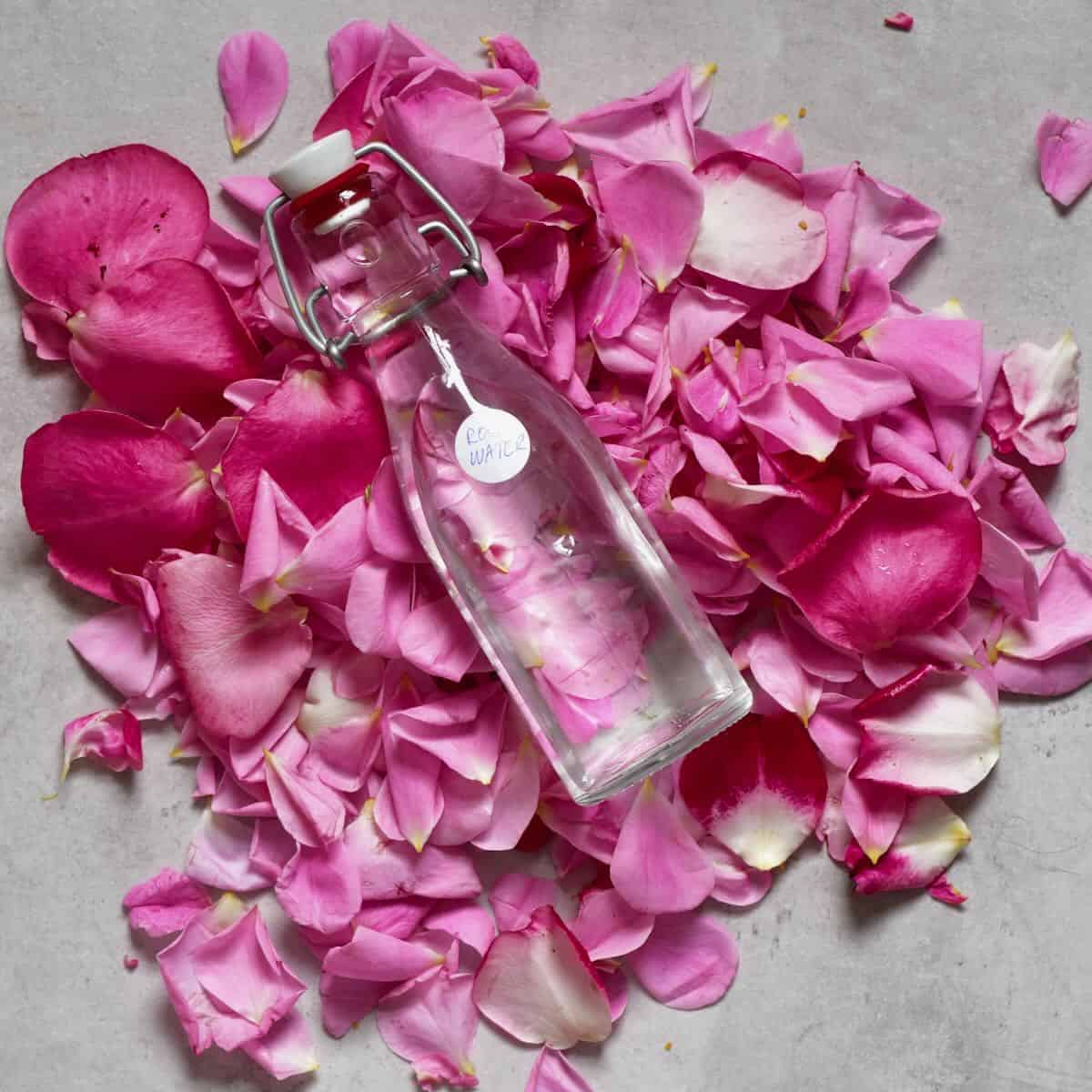
I love all sorts of DIY projects and this homemade rose water is one of my favorites. I find its lovely smell so relaxing, that I can spray it around me all day long. Plus, it can also be used for cooking and in cosmetics so I just had to learn how to make DIY rose water.
Table of contents
Why make rose water at home
If you too enjoy the smell of roses, you’ll love how simple the method of making rose water is and how fragrant it is. Plus, the resulting distilled water is completely chemical-free and is made using just water and organic rose petals. This means that you can use it both as an all-natural beauty product and in the kitchen.
However, to make it safe for consumption rose water needs to be made by distillation – this is the process of evaporating the water and then condensing it back to liquid. Then the distilled rosewater will have all of its impurities removed while keeping the floral aroma and taste of the roses. As this rosewater recipe is very simple, you can then quickly enjoy all of its benefits.
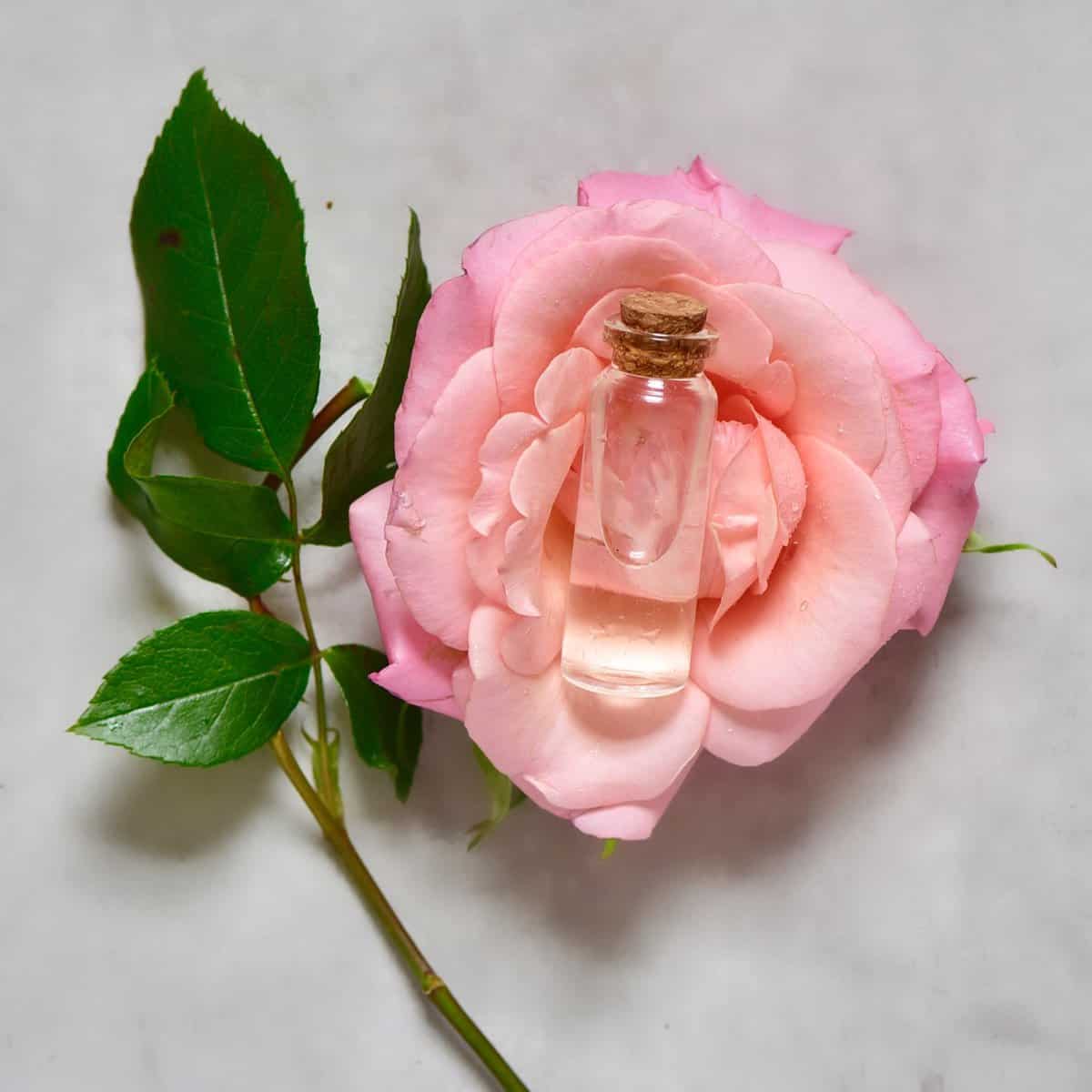
What you’d need
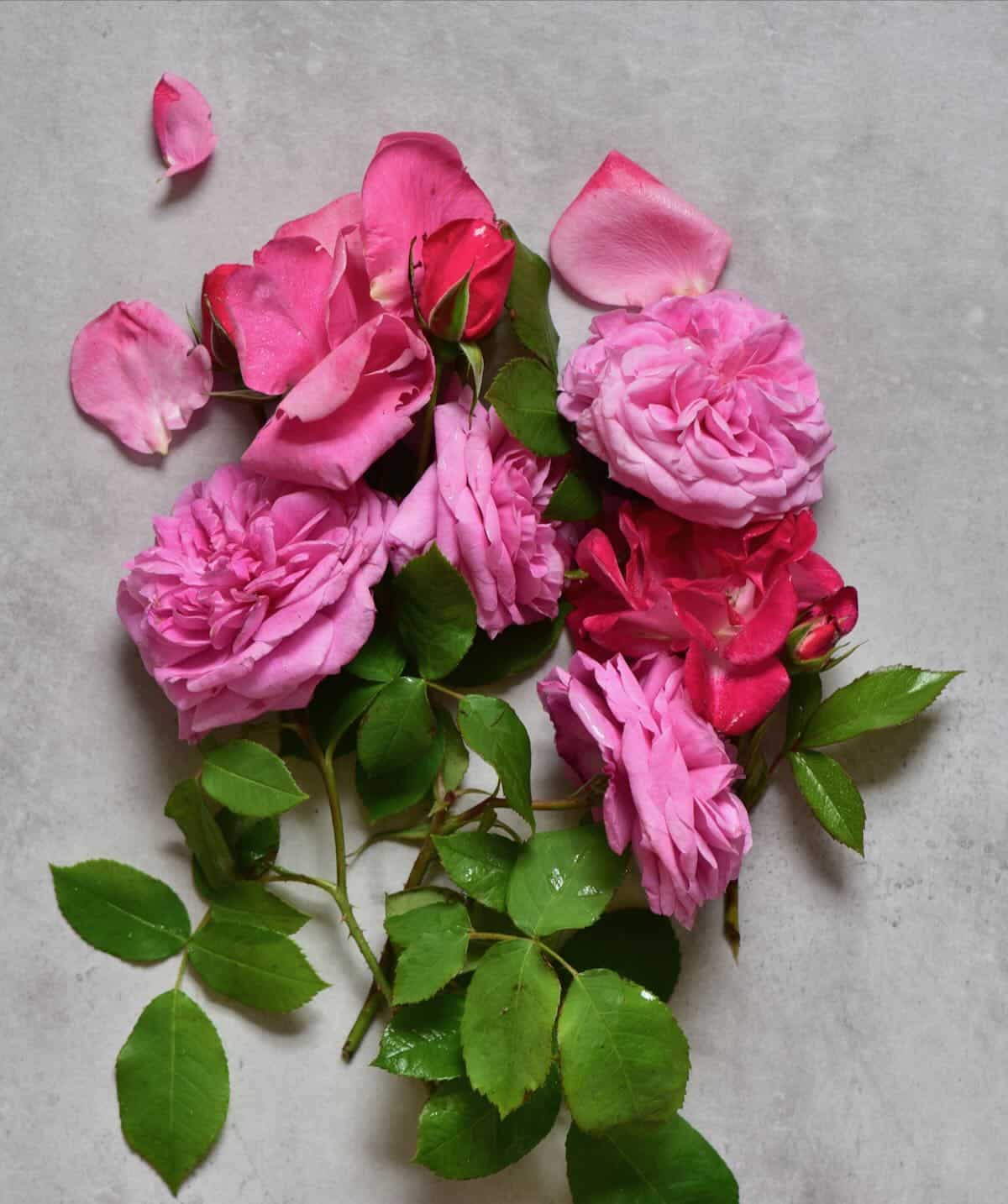
- Fragrant fresh roses: Rosa damascene (damask rose) and Rosa centifolia (centifolia/”cabbage” rose) are great choices but others will work too as long as they are aromatic roses, free of pesticides. Those from the flower shop are often sprayed with pesticides so you shouldn’t use them. Instead opt for unsprayed organic roses, foraged ones, or those from your garden (as long as you know if they are sprayed or not). You need 4-5 blossoms.
- Water: Tap water is fine as we’ll be boiling it. You can also use distilled water.
- Ice cubes: To help with the distillation process.
How to make rose water
Prepare the roses: If you are using roses from your garden, it’s best to pick them first thing in the morning – they will be freshest and most aromatic then. Remove the rose blossoms from the stems, separate the fresh petals, and carefully rinse them to get rid of any dust or little critters.
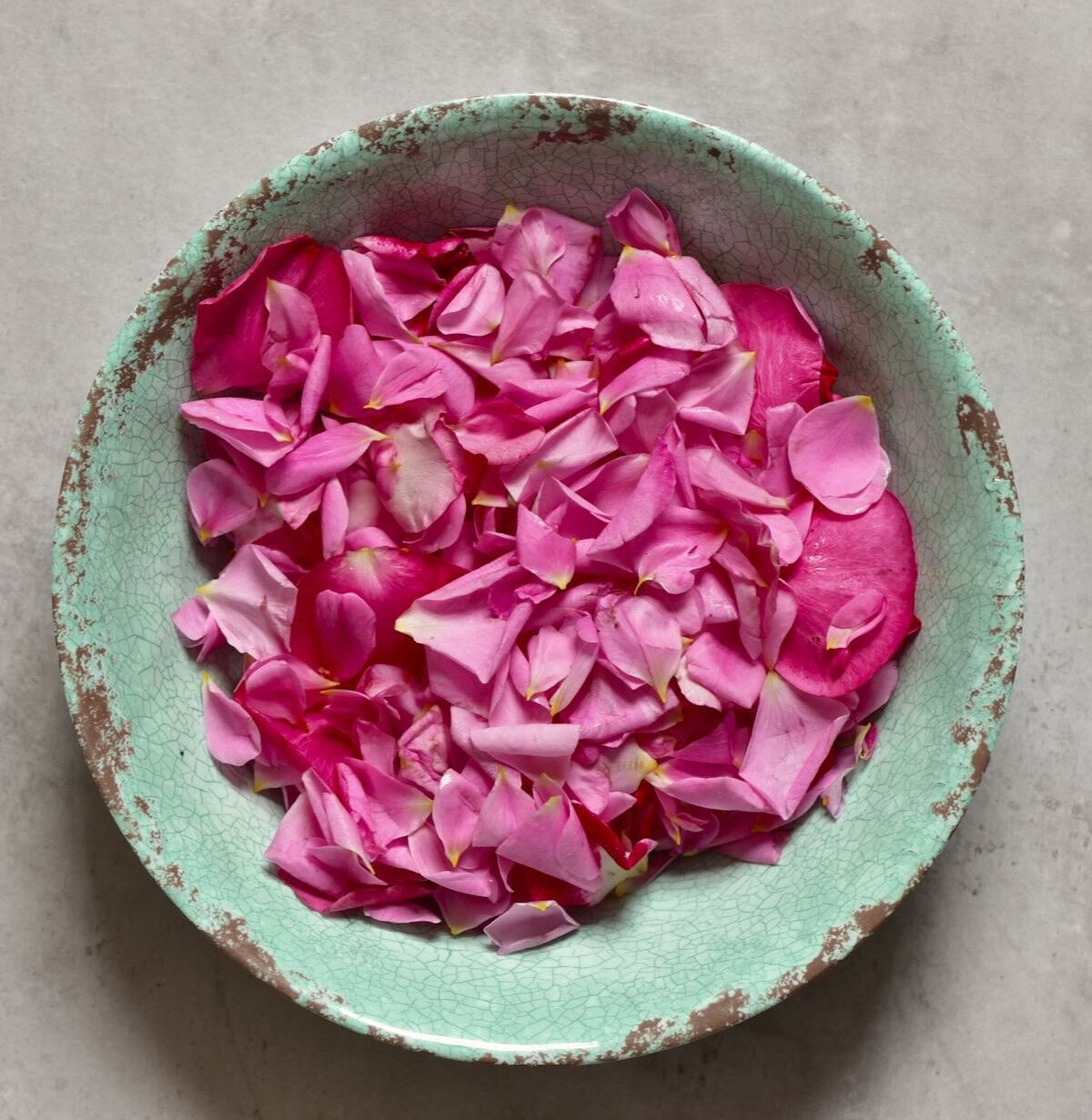
Heat the water and petals: Put a heatproof bowl at the center of an empty pot – this is where the distilled water will collect. Then add the rose petals around the bowl (not inside it). Add enough water to cover the petals. Bring to a gentle boil over medium heat, then let it simmer.
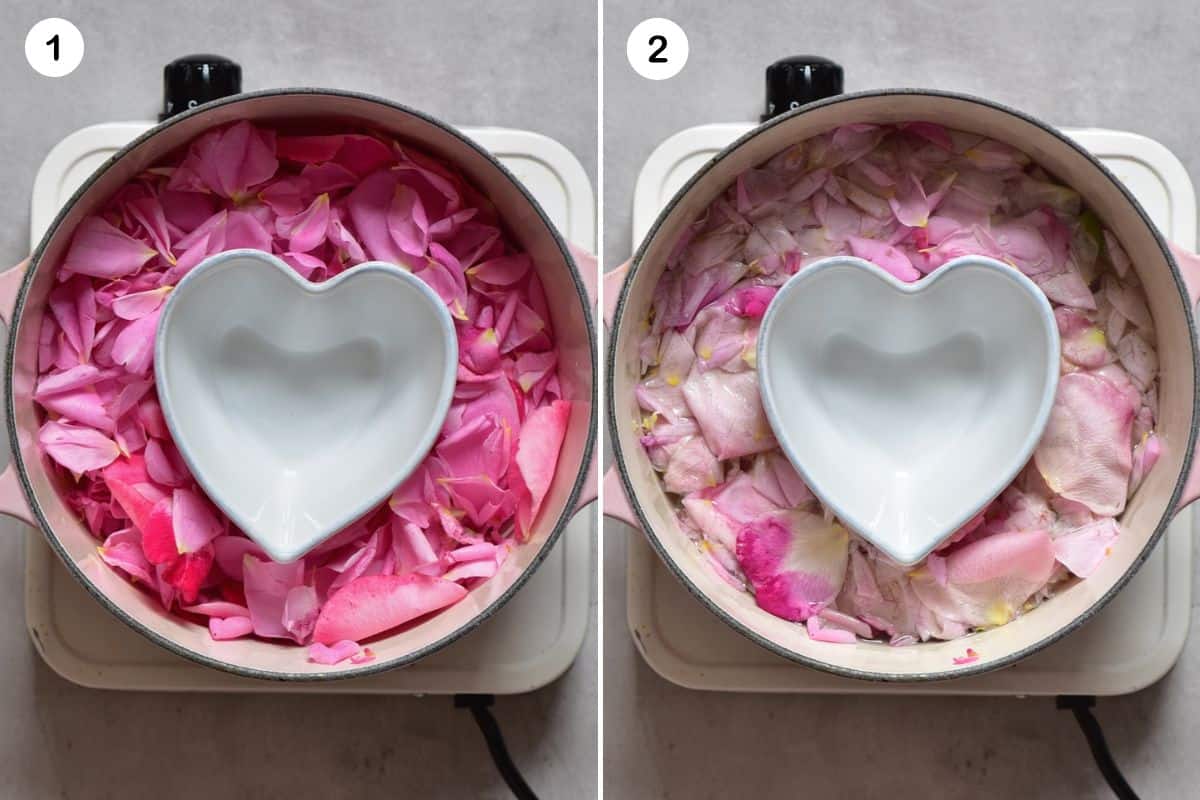
As soon as it boils, place the lid on upside down so the handle is facing into the pot. The inverted lid will help catch the vapor for this distilling method so the water can roll down and drip into the bowl.
Ice the lid to distill the water: Next, add some ice to the top of the lid. As soon as it melts, add more ice cubes. This helps with the condensation of the evaporated water under the lid. You can spoon off the melted ice or use a towel to soak it up. Keep repeating this step for about 20-30 minutes.
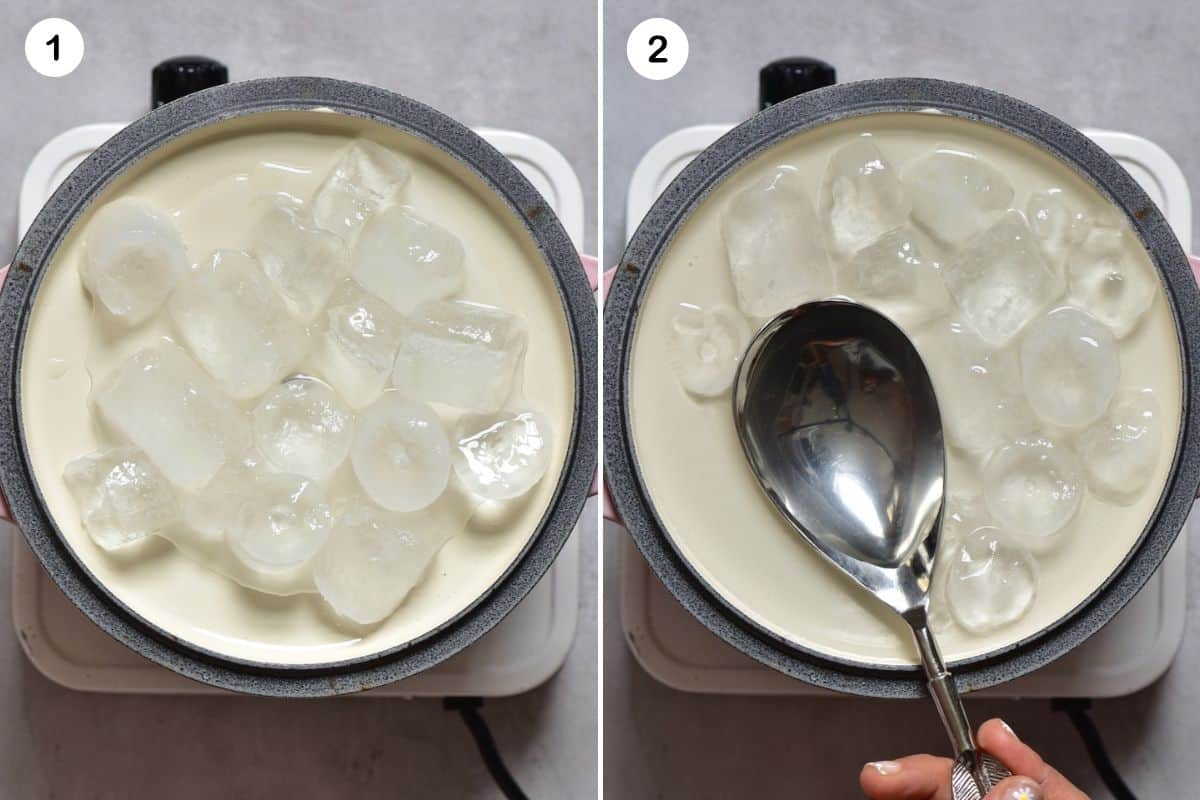
Cool the rose water: In about 30 minutes, the distilled rose water will be ready. It should have condensed into the bowl in the middle of the saucepan and should be completely clear.
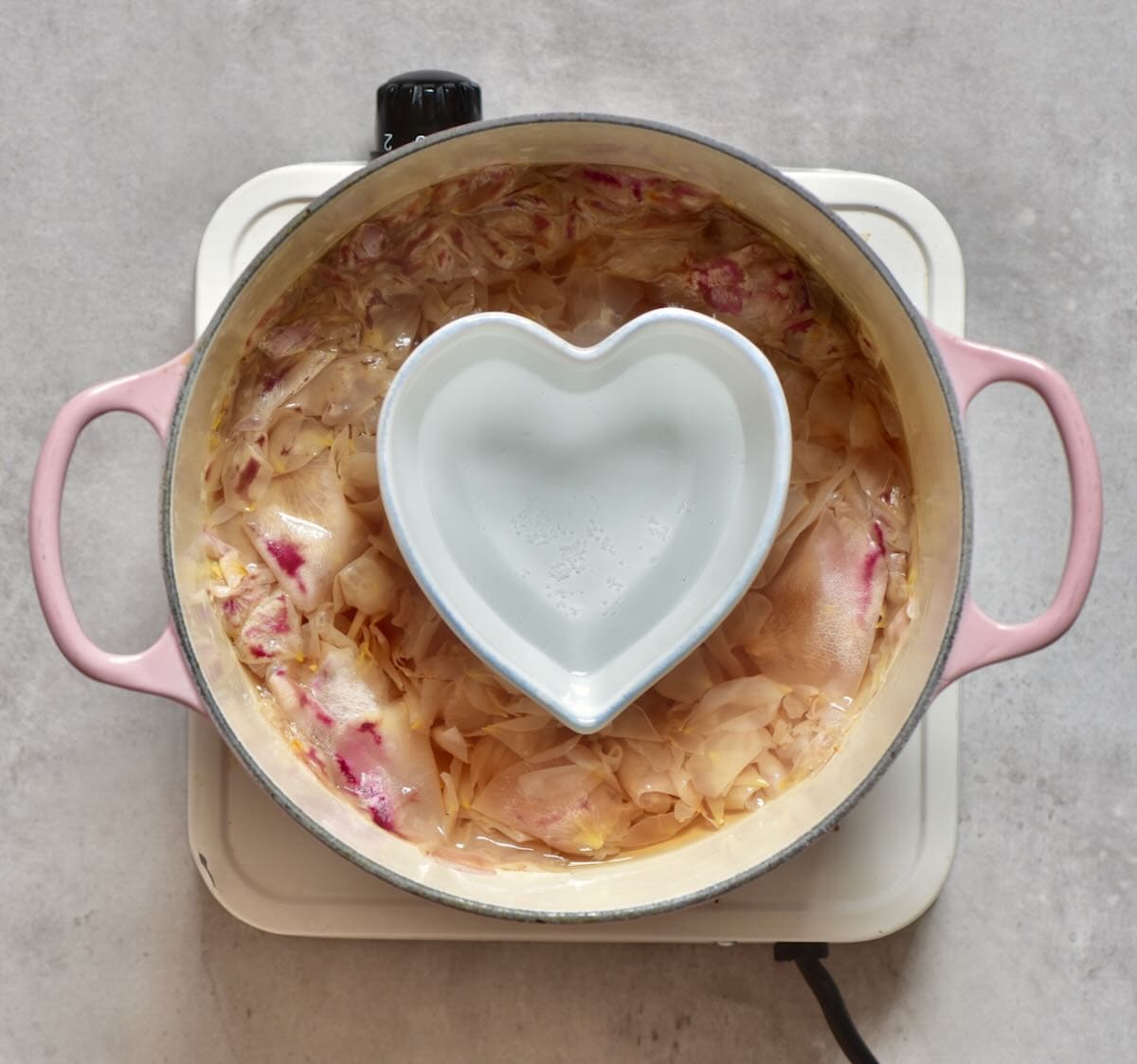
Finally, carefully remove the bowl as it is hot. Set it aside to cool down, then pour the rose water into a clean glass container.
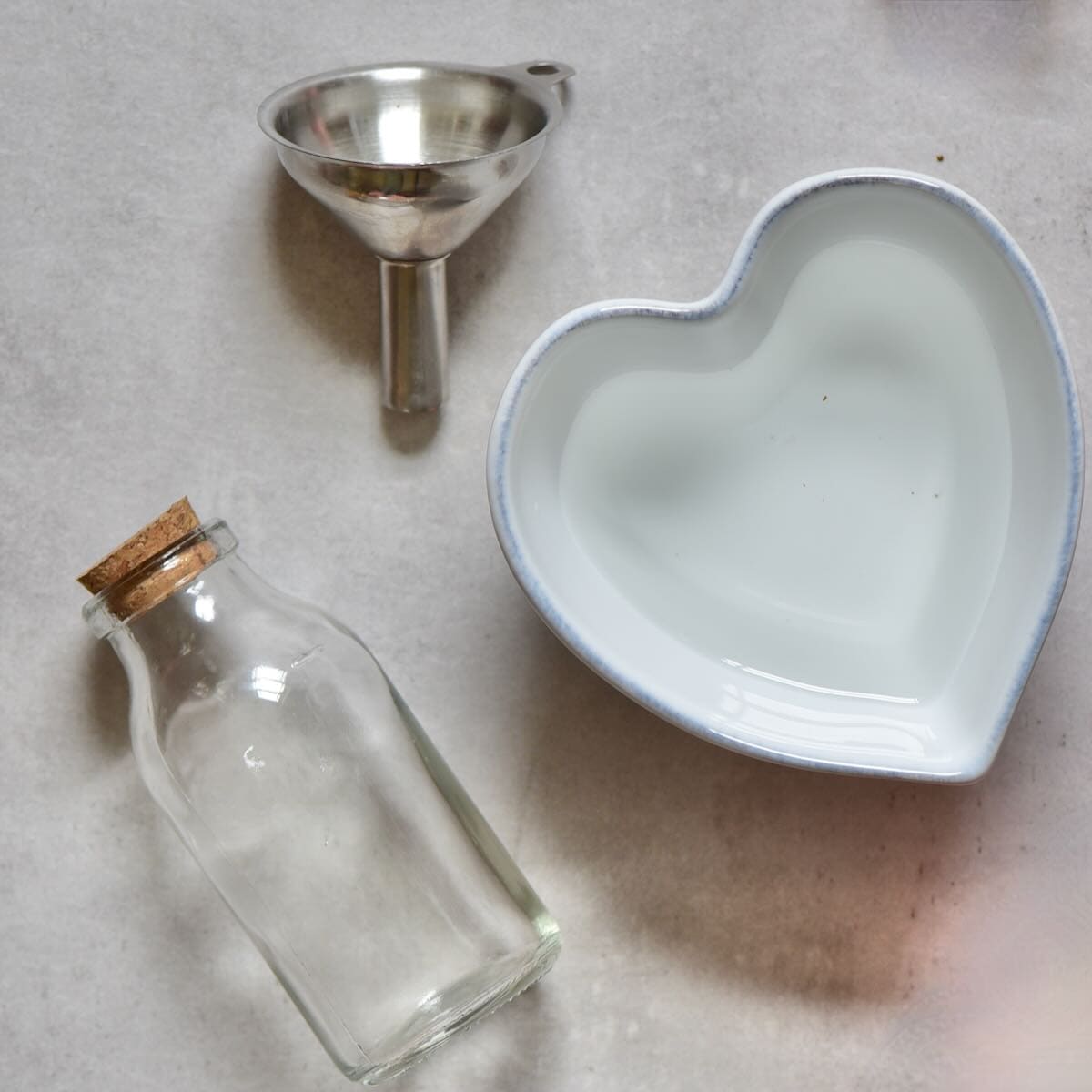
Video tutorial
Storage
Store the rose water in a glass container or a spray bottle in a cool dry place. Make sure to keep it out of direct sunlight and heat. When stored properly, it can last for months, if not even years.
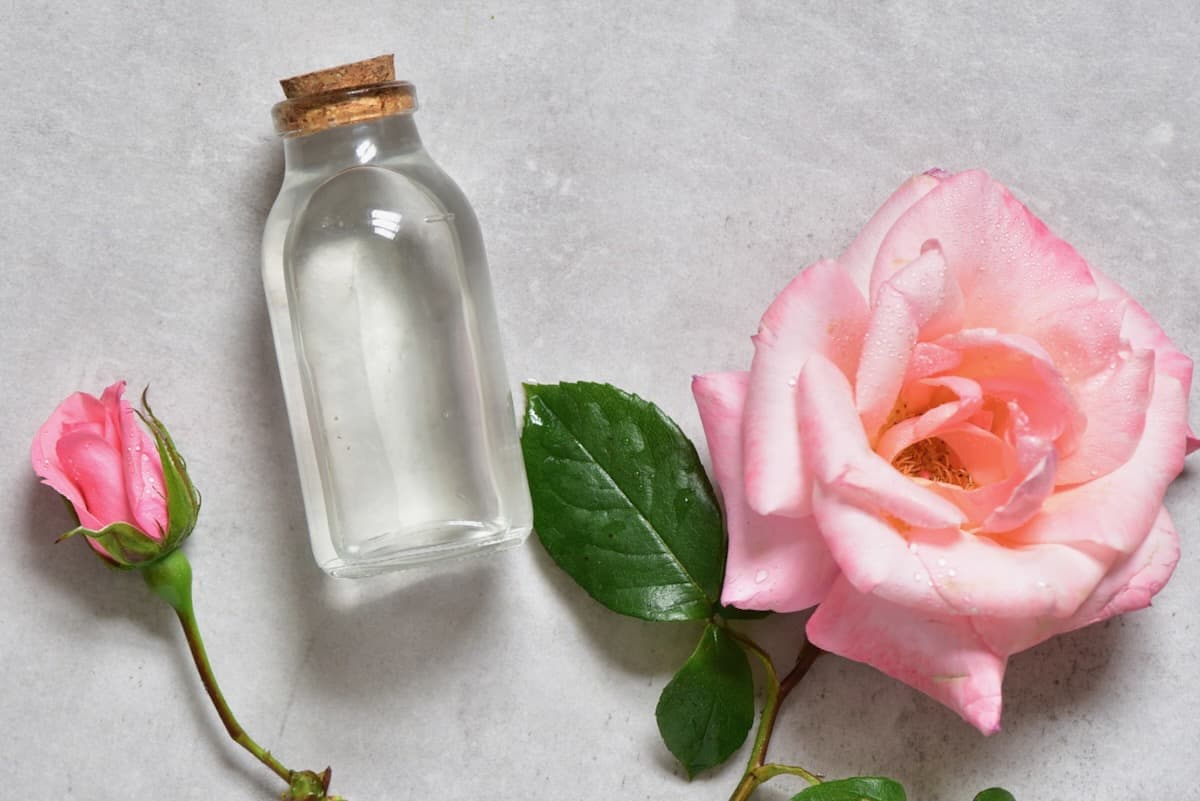
How to use rose water
Because this is pure distilled rose water, you can use it both for cooking and for beauty.
- Aromatic mist: It’s great to be used as a room spray! You can even spray it onto your pillow at night to help you sleep better or added to your bathtub for an aromatic bathing experience.
- Add to drinks: Add a few drops for a delicate floral flavor in cocktails or summer drink recipes like this Fresh Raspberry Lemonade.
- Use in desserts: A lot of traditional Middle Eastern desserts use rosewater, like baklava, bread pudding, or ashta cream. You can also add a drizzle to ice cream, tarts, and more.
- Skincare: Rosewater hydrates and refreshes the skin so you can use it as a natural facial toner, add it to a body lotion/moisturizer, or use it as hair perfume.
More rose recipes and DIYs
If you try this rose water recipe, let me know how it goes in the comments below. I’d appreciate a recipe card rating and would love to see your recipe recreations – tag me on Instagram @Alphafoodie!
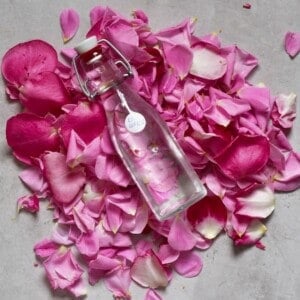
How to Make Rose Water
Ingredients
- 4-5 blossoms of fragrant organic roses make sure they are pesticide-free
- 3-4 cups water enough to cover the petals in your pot
- 3-4 cups ice cubes
This will yield about 1/2 cup (125 ml).
Instructions
- Remove the rose blossoms from the stems, separate the fresh petals, and carefully rinse them to get rid of any dust or little critters.
- Put a heatproof bowl at the center of an empty pot. Add the rose petals around the bowl (not inside it).
- Add enough water to cover the petals. Bring to a gentle boil over medium heat, then let it simmer.
- As soon as it boils, place the lid on upside down so the handle is facing into the pot.
- Add some ice to the top of the lid. As soon as it melts, add more ice cubes. You can spoon off the melted ice or use a towel to soak it up. Keep repeating this step for about 20-30 minutes.
- In about 30 minutes, the distilled rose water will be ready. It should have condensed into the bowl in the middle of the saucepan and should be completely clear.
- Carefully remove the bowl as it is hot. Let it cool down.
- Pour the rose water into a clean glass container and store it in a cool dry place.
Video
Notes
Nutrition
Nutrition information is automatically calculated, so should only be used as an approximation.

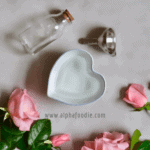
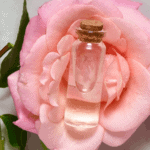
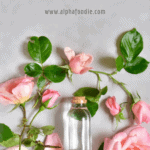

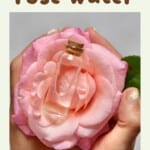
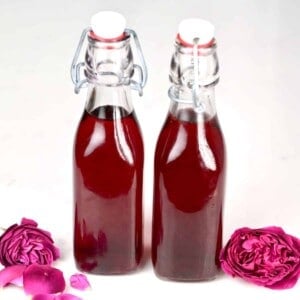
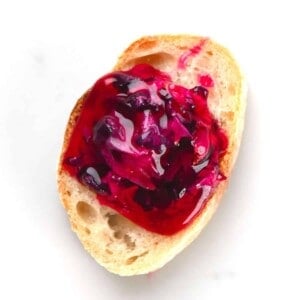
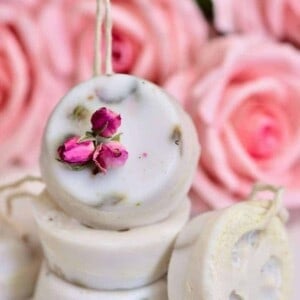









Love your pictures! And thanks for this method, I will definitely try it. Theres roses in our garden every year and I’ve got dried buds as well. I’ve seen so many videos online but they just boil the petals which kept me thinking ‘why is rosewater clear in stores?’ Now makes sense.
Can you mix this with aloe vera as well and is the water that the petals are boiled in still useable?
Hi Amanda,
Thank you so much!
Yes, you can mix it, but I would recommend mixing a small amount before you use it. The shelf life will last longer if you store it separately.
The leftover water with the rose petals should not be consumed, but you can use this as a fragrant room spray and the petals can be composted.
I will try this from my own roses in the garden.
Thank you for your comment! I’m sure it will turn out great 🙂
This is such a beautiful recipe and the photos go so nicely with the mood the Rose Water sets….
Thank you so much for your comment, Debbie. 🙂
Sounds great, except I’m confused, it says, “It should have condensed into the bottle in the middle of the saucepan.” Where do I put the bottle? in the bowl?
Hi Angelique,
Thanks for spotting this. The distilled rose water is gathered into the bowl in the middle of the pot.
Love it! So easy! Thank you
Thank you for your comment, Gina.
Hi! Thank you for the recipe! I just would like to know if it is possible to use this method for fresh herbs such as peppermint?
Hi Darleny,
I haven’t tried it with mint yet, but it won’t do any harm in trying 🙂
Let me know if you gave it a go.
Can you use this Process with the other flowers like gardenias or orange blossoms or other fragrant flowers?
Hi Marc,
You can do it with orange blossoms. I would stick to edible or non-poisonous flowers.
is it alright if the water isn’t a pinkish hue when it’s done? most other tutorials show it kinda pink in the end
Hi Liyla,
Yes, it’s perfectly normal for the water to be very clear – this means you’ve collected the distilled water which has no impurities.
EASY AND I LOVE ALL THINGS ROSES. NEVER KNEW HOW TO MAKE MY OWN ROSE WATER, THO. BUT I HAVE MADE MY OWN ROSE TEA. ITSSO LOVELY AND LIGHT AND IS SO REFRESHING.THANKS FOR MAKING THIS AVAILABLE!
Thank you so much for your comment, Terri. 🙂
Thank you for sharing this recipe,I’m a big fan of rose Water.
For years, I have used a brand that came from the Lebanon,
Reason being, is no additives,nothing but distilled water and roses.
Unfortunately since the bombing, they had no longer imported.
Thank you.
Thanks for your comment, Jibiath. Hopefully, this recipe will help. 🙂
I agree with you
I am just wondering how long after I have made and bottled the rose water do I have to wait to use it as a toner? Does it need to age?
Hi Jess,
You can use the rose water right away, no need for it to age.
Hello I love the tips will be trying ASAP. As far as ingesting how much is enough in each setting and how often.
Hi Eriel,
You just need a few drops when you want to use rose water as a cleanser or moisturizer.
You can also use it when cooking – in sweets, cocktails, and other dishes. Usually, the recipe will tell you how much to add. If you want to experiment yourself, I’d recommend starting with 1 tsp and then you can add more to taste.
There are a lot more tips on how to use rose water here on the blog post.
How fresh would you recommend the roses? Just opening or have been open for a while?
Hi Christina, as long as they are still fragrant, it doesn’t matter! I have a method coming using dried roses too! Fragrant roses to start with is the key!
Hi, how many cups of rose petals should we use if we’re using dried roses? Thank you!!
Dried roses can be used to make rose water, although the resulting water may not be as fragrant or flavorful as rose water made with fresh roses. So I recommend using fresh petals.
If you decide to use dried roses, for petals – 1 to 1.5 cups should be enough, if they are buds – maybe use 2 cups. Let me know how it goes if you give it a try.